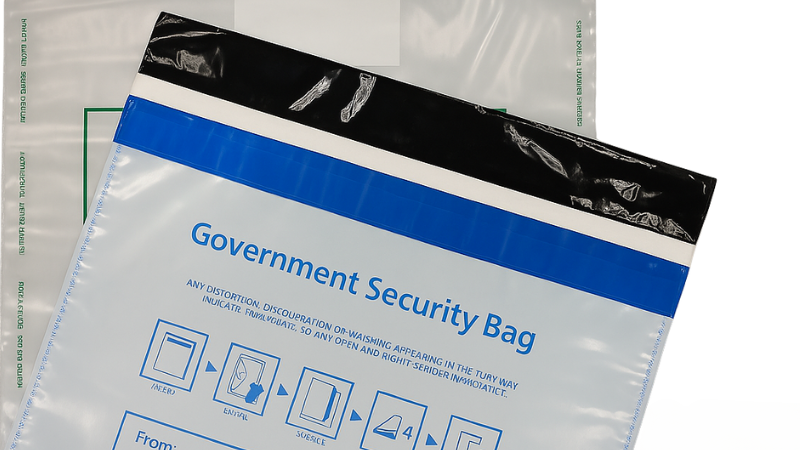Government agencies handle some of the most sensitive records in existence, including court evidence, personnel files, and election data. However, according to a 2023 IBM report, the average cost of a data breach in the government and public sectors reached USD 2.60 million. Despite stronger digital safeguards, physical document handling remains a weak spot that shredding alone can’t fix.
To fill that gap, many agencies are adopting tamper-evident packaging solutions to protect document integrity across the full chain of custody. In this article, we’ll explain why tamper-evident bags and tamper-evident seals are key to full lifecycle protection. Here, we’ll also walk you through their common use cases across different government departments. Let’s get to it.
Why Document Security Matters in the Public Sector?
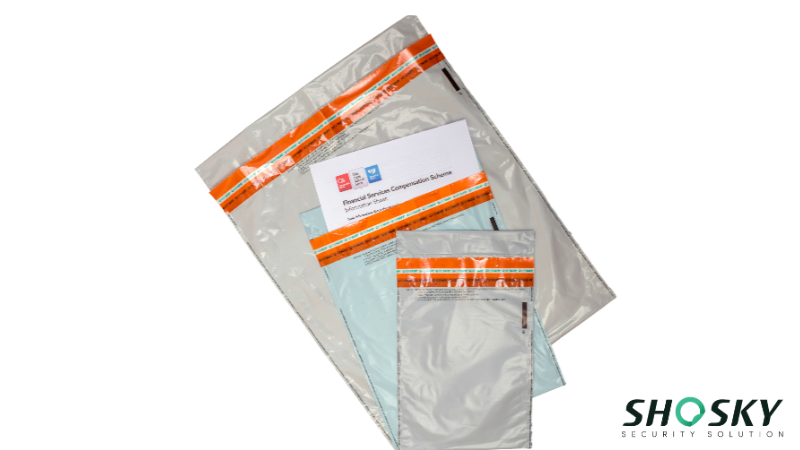
Government agencies are prime targets for data breaches. However, unauthorized access to government agencies’ data can carry serious penalties and lead to litigation or FOI controversy. So, protecting such classified information isn’t just a good practice—it’s essential.
Sensitive government information may include personnel records, classified documents, or medical files. When mishandled, these can expose citizens to identity theft, financial fraud, or reputational damage.
For example, data from Bangladesh’s health ministry was leaked online in June 2023. And this breach wasn’t due to hacking. It stemmed from unsecured data handling.
To prevent such events, agencies must maintain strong protection and traceability. That means implementing access controls, preserving audit trails, and using tamper-evident packaging to ensure every relevant document is tracked. These physical security measures don’t just support compliance. They help protect public confidence in how sensitive government information is handled.
Common Gaps in Government Document Protection
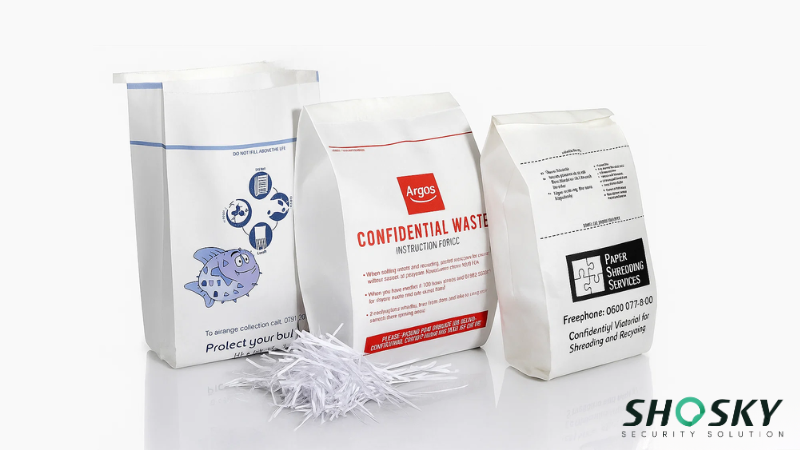
Many agencies still rely too much on shredding and digital encryption. These tools help, but only at the final stage. Documents are often at risk during storage, transit, or manual handling. In many reported cases, files were sent to the wrong recipient or left unsecured. This highlights a real gap in physical protection.
Transport and storage create another weak point. Election ballots, money handling, court files, or tax records often pass through several hands and locations.
Without tamper-evident seals or access controls, unauthorized individuals can view or alter documents unnoticed. Basic locks or folders don’t provide the level of document security needed for sensitive information.
One major issue is the lack of audit trails and tamper indicators. Without serialized seals or security labels, there’s no way to prove who accessed a document or when. To meet compliance standards and protect government information, these gaps must be addressed with secure packaging and traceable systems.
What Are Tamper-Evident Bags and Seals?
Tamper-evident bags and seals are physical security tools designed to protect sensitive information during storage, handling, or transfer. These solutions help maintain the integrity of classified documents by using irreversible closures, visible void indicators, and serialized tracking.
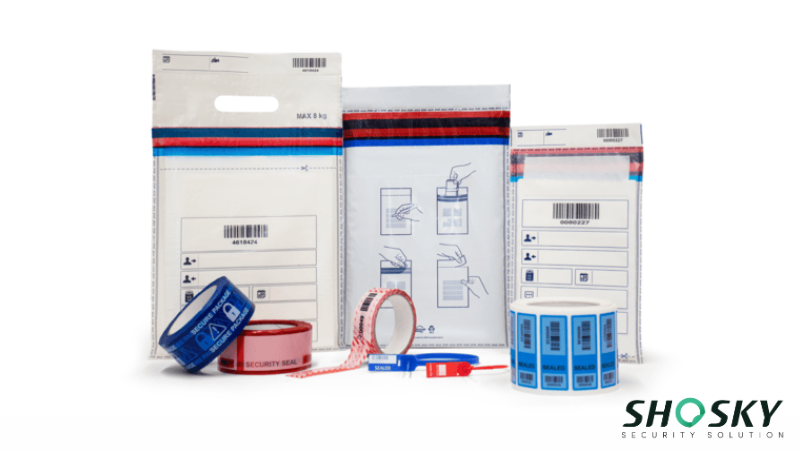
If someone tries to open or alter the contents, the damage is obvious, making unauthorized access easy to detect. This visibility supports audit trails and reinforces access controls for sensitive files. It also prevents information-related chaos. There are several types of tamper-evident solutions available, each suited for different government operations. Some of these include:
- Adhesive closure bags: Single-use bags that show clear tampering if opened or cut.
- Zipper bags with tags: Reusable bags locked with numbered or color-coded security tags.
- Security seals with barcodes: Used to track access and movement through serial numbers or scans.
- Custom-printed bags or seals: Include agency names, case numbers, or labels for classified files or FOIA use.
These solutions help agencies maintain document integrity and comply with legal and operational regulations, especially when dealing with sensitive or protected files.
From Compliance to Confidence: Why Tamper-Evident Packaging Matters?
Tamper technologies do more than seal a bag—they reinforce accountability at every step of document handling. Below are four key reasons why tamper-evident solutions have become essential in both everyday operations and high-stakes processes.
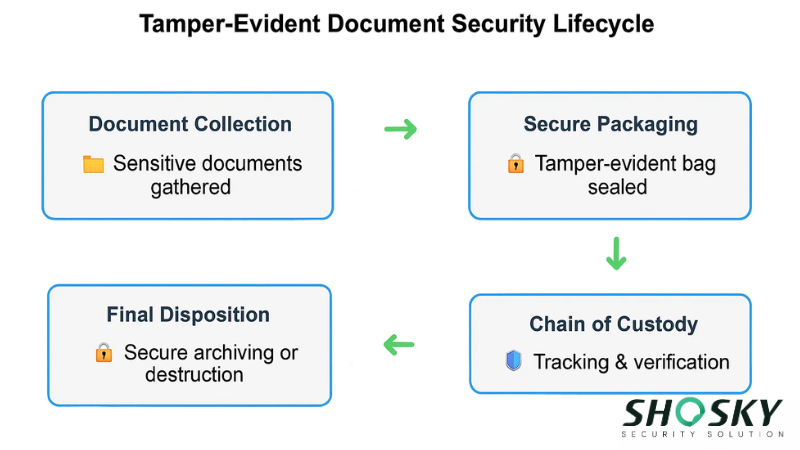
Reason 1: Track Document Access with Serialized Audit Trails
Serialized seals make it easier to link access back to the person or department responsible. By assigning each tamper-evident seal to a specific user, agencies can maintain integrity across document handling and ensure that no sensitive form, file, or account is accessed without proper authorization.
Reason 2: Support Transparency in Elections, Courts, and FOIA Requests
When tamper-evident seals are used in the same manner across elections or legal processes, they protect the chain of custody and reduce questions about fairness or bias. Whether it’s ballot bags or court files, clear labeling helps authorized employees serve the public with confidence and respond quickly if tampering is suspected.
Reason 3: Build Public Trust Through Visible Security Tools
Tamper-evident bags and seals signal that strict rules are in place to protect relevant documents. When users see these safeguards applied to justice-related files, FOIA responses, or records subject to public review, it reinforces trust in the agency’s job, its handling practices, and its overall commitment to data integrity.
Reason 4: Ensure Compliance with HIPAA, CJIS, and ISO Standards
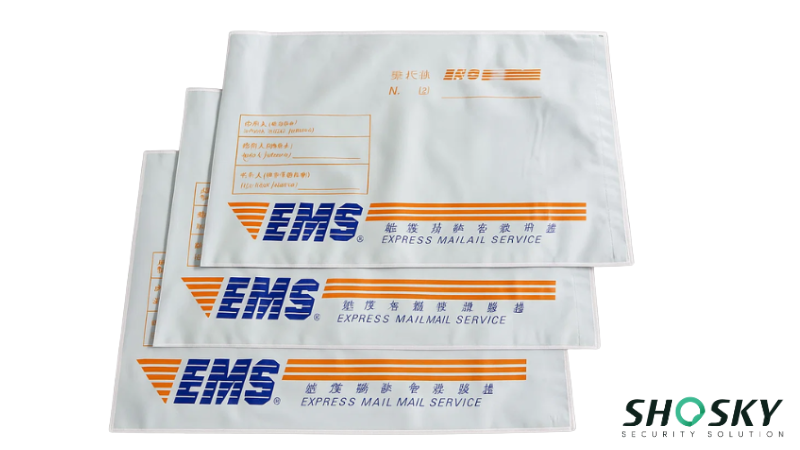
Tamper-evident bags and seals help agencies comply with regulations that govern access to classified files, personnel records, and medical documents. Tools that meet HIPAA, CJIS, and ISO 17712 standards support consistent handling practices, reduce unauthorized disclosure, and ensure every file is stored, moved, and reviewed in an accountable manner.
Reason 5: Prevent Internal Mishandling of Classified Information
Tamper-evident tools discourage unauthorized employees from accessing or sharing restricted files. By enforcing sealing and logging practices, employer agencies can reduce internal risks, prevent prohibited document sharing, and hold users accountable for every sensitive form or classified file they handle. This extra layer of control supports secure operations and protects both the agency and the public.
Use Cases in Government & Legal Operations
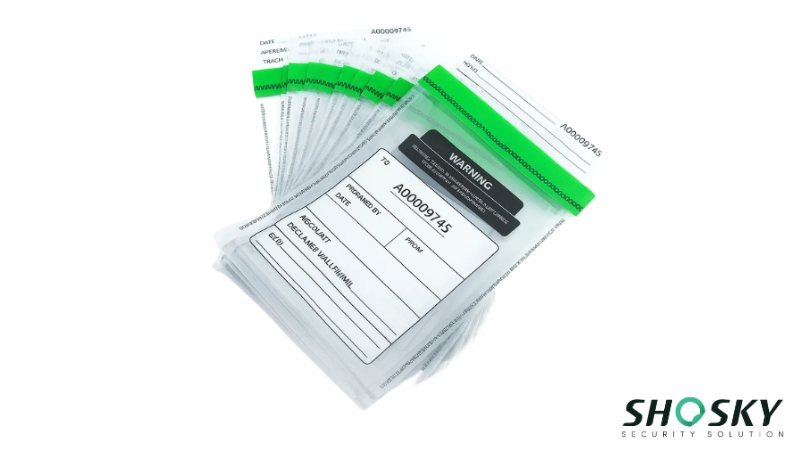
Tamper-evident packaging isn’t limited to one department—it supports document integrity and secure document sharing across multiple public functions. Here are the main departments where tamper-evident packaging is used, along with their use cases:
| Department | Use Case |
|---|---|
| Courts | Securing case files, sealed court documents, or physical evidence submissions |
| Elections | Transporting and storing ballots with clear chain-of-custody during voting processes |
| Law Enforcement | Handling seized items, drug evidence, or confidential case records with serialized tracking |
| Municipal Offices | Protecting vital records like property deeds, marriage licenses, and birth/death certificates |
| Public Health | Safeguarding vaccine logs, patient data, and other sensitive medical information |
These use cases highlight how different government sectors rely on tamper-evident solutions to secure files, meet compliance requirements, reduce access risks, and protect public trust. Choosing the right tools ensures accountability at every step of the process.
How to Choose the Right Tamper-Evident Solutions for Government Agencies?
Choosing the right tamper-evident solution starts with understanding your agency’s specific handling, storage, and transport needs. Not all bags or seals are built the same, and small differences in material, size, or sealing method can affect compliance and document integrity. The following key areas can help agencies guide their selection process.
Understand the Bag Options
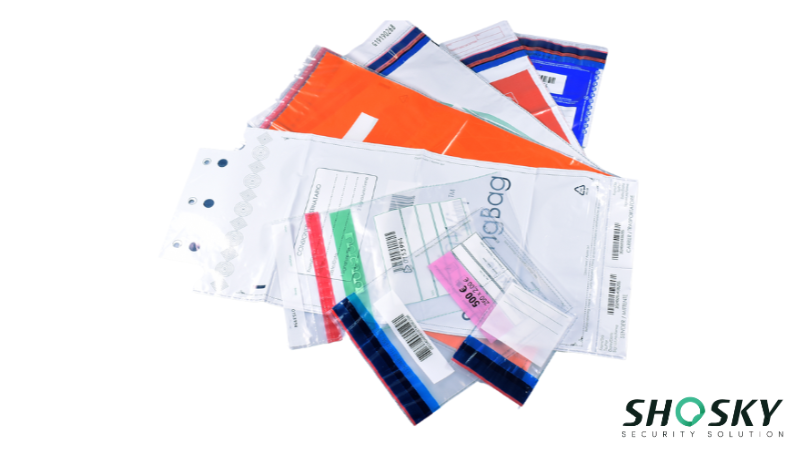
Tamper-evident bags come in different types with different capabilities, and choosing the right one depends on the kind of documents you’re handling.
Clear bags allow visual checks without breaking the seal, which works well for elections or routine inspections.
Opaque bags offer more privacy and are better for transporting classified or sensitive records.
Here are the main bag features that need to be considered when selecting the right bag:
- Small sized: Best for ID cards, cash, or single-page files
- Large sizes: Fit bulky records like personnel files or court documents
- Adhesive closures: One-time use with visible tamper signs
- Zipper bags: Reusable but must be sealed with tags for security
Get to Know the Seal Options

Tamper-evident security seals are a key part of tamper-evident systems. They help track access, confirm integrity, and show if a document has been opened without permission. Some seals are basic, like numbered tags, while others offer full tracking through barcodes or color systems.
Here are the seal types commonly used:
- Numbered seals: Simple tracking by logging seal numbers manually
- Barcode seals: Allow digital audit trails and system-based access logs
- Color-coded seals: Help sort files by department or clearance level
- Custom-printed seals: Include agency names, file codes, or handling instructions
- Tamper-evident labels: Clearly show if someone removed or replaced the seal
Match Bag and Seal Systems for Full Audit Control
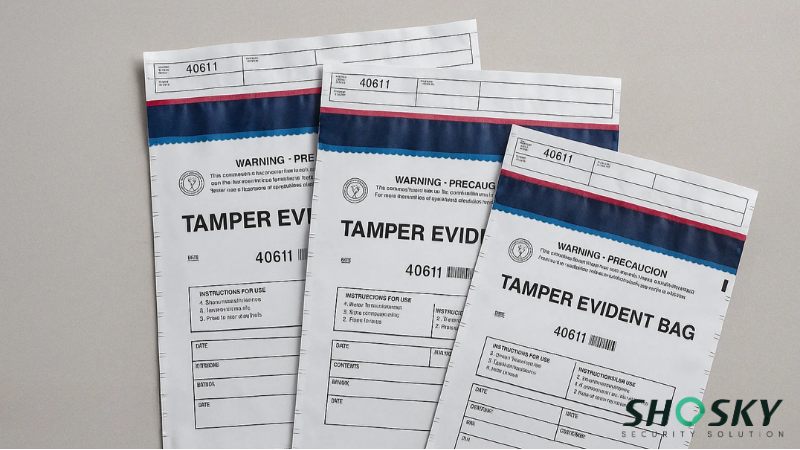
You need to know that to maintain proper chain-of-custody, the bag and seal system must work together. A mismatched system—such as a non-serialized seal on a high-security bag—leaves gaps in document tracking. So, agencies must ensure that all security components align with audit practices and classified information handling policies.
Matching systems also help reduce handling errors. When seals and bags are paired by serial number, any tampering attempt becomes immediately visible. This allows reviewers or compliance officers to confirm document integrity without opening the bag.
Consider Environmental Resistance: Heat, Water, and Chemicals
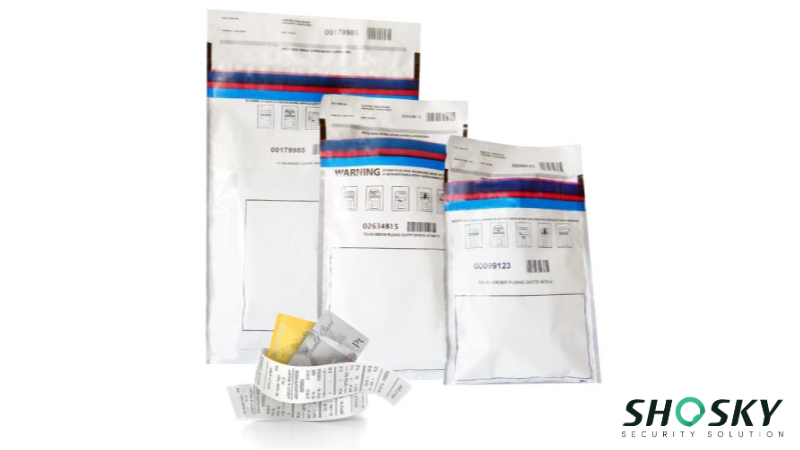
Tamper-evident bags used in field operations—such as during elections, police work, or health inspections—may be exposed to harsh conditions. Look for materials that resist heat, moisture, and chemicals to ensure document protection during transport or storage. Thin plastic tears easily under pressure, but reinforced polymers can maintain seal integrity.
Some seals lose adhesion in high humidity or extreme temperatures. Choosing tamper-evident solutions that are tested for environmental resistance ensures that documents remain secure regardless of location or climate. This is especially important for agencies operating across diverse regions or in mobile units.
Real-World Examples of Enhanced Document Protection
Tamper-evident packaging isn’t just a theoretical solution. It’s already making a difference in real-world government operations. The examples below show how tamper-evident packaging solutions have helped reduce risk, support compliance, and strengthen public trust.
1. Canada (2019): Police Department Upgrades Evidence Handling
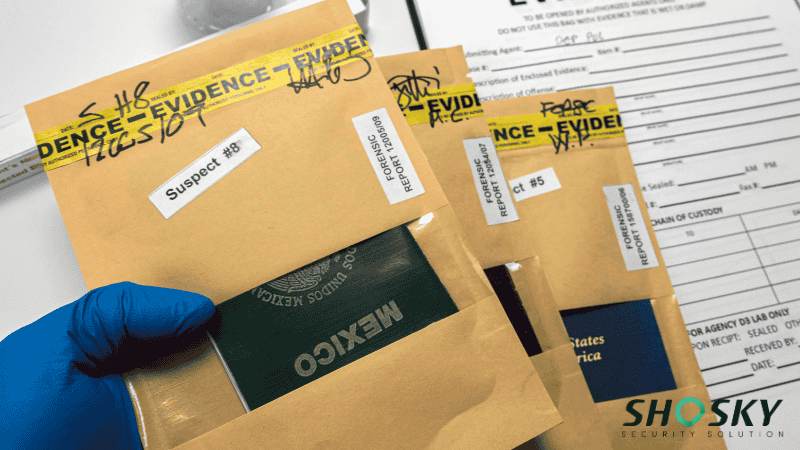
In 2019, the Canadian police department overhauled its evidence management procedures after identifying security gaps in its old packaging system. Officers had been using hot-melt adhesive bags that were vulnerable to tampering under field conditions.
The new solution included tamper-evident evidence bags with void-message seals, tear-off audit receipts, dual serial numbers, and barcode tracking. These enhancements improved audit trails and ensured that seized case files and physical evidence were securely handled throughout the entire chain-of-custody process.
2. United Kingdom (2010–Present): Serialized Seals in Election Security & Document Sharing
Since 2010, UK election officials have used serialized paper security seals—often called “pink paper seals”—to protect voting equipment during polling. Before any election begins, these seals are applied to ballot boxes and voting machines, signed by officials, and documented.
The system ensures that ballot units or results cannot be tampered with without immediate detection. Officials verify seals at counting centers, and any damage or mismatch triggers an investigation. The procedure provides physical security for classified election documents and reinforces audit trail requirements.
3. United States (Georgia, 2020): Paper Audit Trails in Ballot Handling

In the 2020 U.S. presidential election, the state of Georgia used ballot-marking devices equipped with voter-verified paper audit trails (VVPATs). These paper records were sealed and stored using tamper-evident packaging methods.
Following a narrow vote margin, Georgia conducted a full manual recount. The secure storage and serial tracking of ballots allowed officials to identify and correct tally errors affecting over 1,200 ballots. This demonstrated how sealed paper systems support transparency, compliance, and confidence in election results.
FAQs
How long do tamper-evident bags last in storage?
Most tamper-evident bags can last up to 5 years if stored in dry, room-temperature conditions.
Can we print our agency name on bags?
Yes, we offer custom printing options. You can add your agency’s name, logo, barcodes, or other security labels directly onto the bags.
Are tamper-evident tools certified for legal evidence use?
Yes, when compliant with standards like ISO 17712 or CJIS, they are accepted for legal and forensic use.
Conclusion
Relying solely on shredding or digital tools leaves physical records vulnerable. Tamper-evident bags and seals offer proven ways to safeguard classified information and maintain integrity from start to finish. Whether you’re storing legal files or transporting ballots, these solutions help your agency stay compliant and credible!
Secure Records with Shosky Security’s Tamper-Evident Bags and Seals
Shosky Security provides high-quality tamper-evident bags and seals that help you maintain audit trails, prevent unauthorized access, and stay compliant with strict data protection standards! So, ready to upgrade your agency’s document security? Contact us today for a free sample kit or quote!
